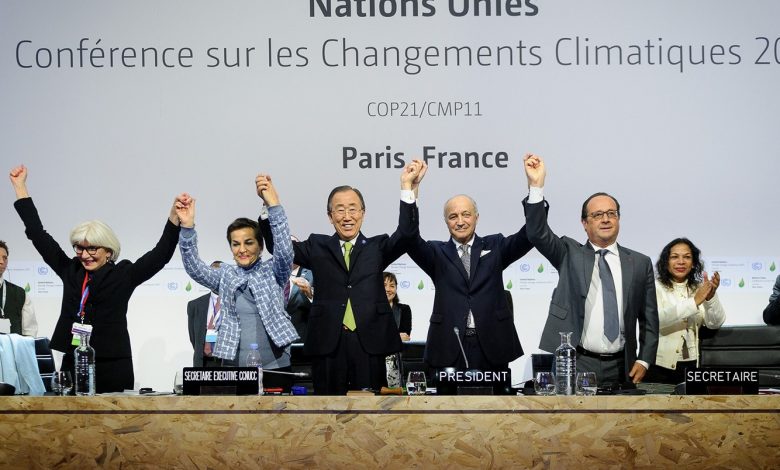Fossil Fuel Production Continues to Surge Following the Paris Agreement

The Development of the Paris Agreement
Under the 2015 Paris Climate Agreement, which replaced the 1997 Kyoto Protocol, foreign leaders worked within the United Nations Framework Convention on Climate Change (UNFCCC) to adopt a series of greenhouse gas emissions mitigation, adaptation, and finance strategies in an effort to reduce the impact of climate change. However, a recently released report from the United Nations reveals that current global production targets for fossil fuels will put the world on the path to release more than double the amount of carbon dioxide that scientists say would increase global warming by more than 1.5 degrees Celsius (Gronewold, 2019).
The Paris Agreement was built upon a global effort to combat climate change while providing aid to those that are most vulnerable to the effects of global warming using new technology and appropriate streams of financial support. This effort has gone above and beyond the conventional route to dealing with climate change, which has traditionally only focused on reducing greenhouse gas emissions.

The Production Gap
In addition to developing a strategy to reduce carbon emissions, the Paris Agreement included essential language on climate change adaptation and specific financing methods. World leaders incorporated a whole-systems approach to include mitigation, adaptation, and financing methods to ensure that less developed countries would also able to move away from fossil fuels. While the Paris Agreement was originally ratified by 195 countries, the “2019 Production Gap” report released by the U.N. Environment Program has outlined how existing coal, oil, and natural gas production will vastly overshoot the global goals defined within the Paris Agreement.
The Paris Agreement highlighted how world leaders would work together to reduce coal, oil, and natural gas production. Although, the report from the U.N. Environment Program is in stark contrast with the goals of the Paris Agreement since it outlines how the United States, Canada, and Australia are planning to increase fossil fuels extraction in anticipation of a growing export market, while China and India are developing plans to drastically increase their domestic fossil fuels production (Gronewold, 2019).

Increasing Fossil Fuel Production
By 2030, the United States, Saudi Arabia, China, Russia, India, Canada, and Australia plan to produce 120 percent more fossil fuels, which is at drastic odds with the language that was included within the Paris Agreement (Leahy, 2019). These findings were all produced using publicly available government documents, which also reveal that the world’s largest producers of coal also plan to increase global production by 280 percent (Leahy, 2019). While the world’s scientists have calculated that emissions must fall by roughly 50 percent by 2030 to limit global warming to 1.5 degrees Celsius, global greenhouse gas emissions continue to surge higher (Carrington, 2019).

Rising Carbon Dioxide Levels
Petteri Taalas, the secretary-general for the UN’s World Meteorological Organization (WMO) has released public statements revealing that there are no signs that global greenhouse gas emissions will slow down or even decline at all in the near future. A recent WMO report that was released in November highlighted that the global average concentration of carbon dioxide reached 407.8 parts per million in 2018, which is a record level (Carrington, 2019). The continued increase in atmospheric carbon dioxide is expected to create a rise in global temperatures that will speed up the melting of Earth’s glaciers, increase sea level rise, boost the severity of inclement weather, and force the migration of millions of people around the world (Leahy, 2019).
Sources
Carrington, D. (2019). “Climate-heating greenhouse gases hit new high, UN reports.” The Guardian.
Gronewold, N. (2019). “Planned Fossil Fuel Extraction Would Blow Past Warming Limits.” Scientific American.
Leahy, S. (2019). “Dangerous levels of warming locked in by planned jump in fossil fuels output.” National Geographic.



